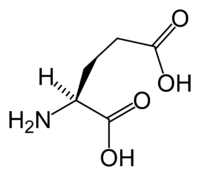
Photo from wikipedia
Improvement of neuronal recovery in the ischemic penumbra, an area around the core of a brain infarct with some remaining perfusion, has a large potential for the development of therapy… Click to show full abstract
Improvement of neuronal recovery in the ischemic penumbra, an area around the core of a brain infarct with some remaining perfusion, has a large potential for the development of therapy against acute ischemic stroke. However, mechanisms that lead to either recovery or secondary damage in the penumbra largely remain unclear. Recent studies in cultured networks of cortical neurons showed that failure of synaptic transmission (referred to as synaptic failure) is a critical factor in the penumbral area, but the mechanisms that lead to synaptic failure are still under investigation. Here we used a Styryl dye, FM1-43, to quantify endocytosis and exocytosis in cultures of rat cortical neurons under normoxic and hypoxic conditions. Hypoxia in cultured cortical networks rapidly depressed endocytosis and, to a lesser extent, exocytosis. These findings support electrophysiological findings that synaptic failure occurs quickly after the induction of hypoxia, and confirms that the failing processes are at least in part presynaptic.
Journal Title: Frontiers in Cellular Neuroscience
Year Published: 2017
Link to full text (if available)
Share on Social Media: Sign Up to like & get
recommendations!